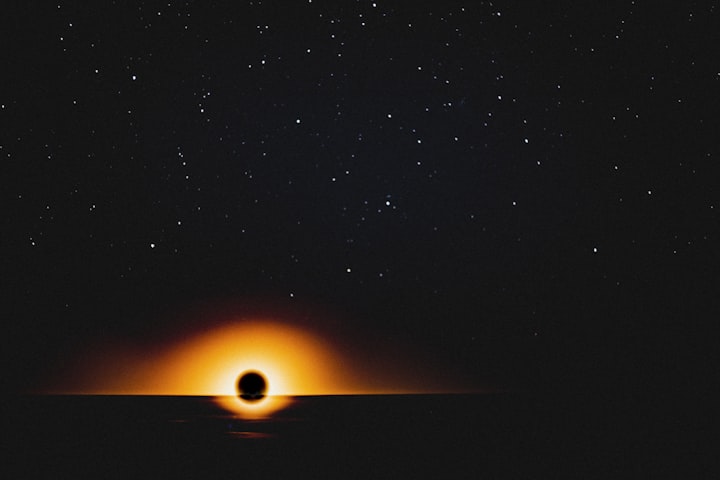Why We Cannot Capture The Photo Of Black Hole?
Why We Cannot Capture The Photo Of Black Hole?

The Event Horizon Telescope, a planetary-scale array of eight ground-based radio telescopes created by an international collaboration, has captured images of a supermassive black hole in the center of the galaxy M87 and its shadow. The ground-breaking images were captured by Event Horizon Telescope (EHT), a network of eight radio telescopes from Antarctica to Spain and Chile and over 200 scientists. What is notable about the M87 image obtained from the EHT is that the radio dishes scattered throughout the globe were used to simulate a gigantic telescope the size of Earth.
Astronomers have captured the first picture ever of a black hole, engendering a revolution in our understanding of the universe's most mysterious objects. For the first time mankind has photographed one of the most elusive cosmic animals and shone a light on the exotic space-time realm beyond our borders. The image shows a halo of dust and gas that traces the outline of a colossal black hole at the heart of the chaotic M87 galaxy, 5.5 m light years away from Earth.
The very first image of a black hole will become the most iconic image in science history, right up there with Apollo 8 the image of the Earth ascending from the moon, the double spiral staircase of DNA and so on. The picture will now look blurry, but a sharper picture will emerge in the years to come. The first image of the actual black hole was taken this week, and the fantastic fact that scientists were able to capture an image of it at a distance of 5.5 million light years is mind-boggling.
Researchers announced Wednesday morning that scientists used a global network of telescopes in April 2017 to see if they could capture the first image of a black hole.
The composite image, combined with data from the Hubble radio telescope, shows how rays of energy and matter are emitted from the center of the Hercules galaxy. In the picture, the central dark region is surrounded by a ring of light, which looks bright on one side.
The binding shell of the EHT is sufficient to make M87 visible with the appropriate resolution to read the page number of a book designed by MoMA for storage in the Eiffel Tower. Photons, the light pieces that register an image of M87, must travel all the way through the seized telescope to register on the hard drive of the data.
It is generally thought that taking an image of a black hole is impossible, as the image would escape the light and appear black. Some scientists believe they can image black holes by capturing their silhouettes and glowing surroundings, but their ability to image objects so far away has eluded them.
The National Science Foundation says there are four types of black holes - from tiny primeval black holes formed after the Big Bang to supermassive black holes - like the one in the image released Wednesday - that are much more robust than our sun. Because of their strong gravity, supermassive ones - which can be millions of times heavier than the Sun - tend to be surrounded by other bright matter making it difficult to see the black hole itself. According to NASA, light and humans cannot see into a black hole, so scientists must use special tools such as telescopes to detect them.
One of the researchers who became the lead of the black hole photo project is MIT student Katie Bouman who helped develop an algorithm that turns raw telescope data into images of black holes. Bouman gave a TED talk in mid-2017 explaining how scientists are trying to image black holes and predicted that the first photos would come in a few years. Geoffrey Crews, vice chairman of Event Horizon Telescope, predicted that if you take an ordinary photo with millions of pixels, inflate it a few thousand times and smooth it out you will see the same resolution as in an image of a black hole.
Scientists working with the Event Horizon Telescope (EHT) announced Wednesday that they have mapped the event horizon of a supermassive black hole at the heart of a chaotic galaxy 55 million light years from Earth. Astronomers trying to understand a mysterious aspect of our universe have taken a photo of a black hole for the first time, an international consortium of scientists announced Wednesday at a simultaneous news conference worldwide. The flurry of images comes two years after the team has captured their data, ending a long wait for one of the most exciting astrophysical tasks in modern memory.
We saw something that we thought was unpredictable, "Sheperd-Doeleman said on April 10 in Washington, D.C." We saw and photographed a black hole, "she told one of seven simultaneous news conferences. The researchers behind the EHT project had hoped to capture a suitable image of Sagittarius A *, but couldn't. The aptly named EHT consists of eight different telescopes at various observatories around the world that work in sync to map the black hole at the center of M87, a supermassive black hole located at the center of our own Milky Way and the Sagittarius Galaxy.
Newsletter Subscribe to the Insider Healthcare Newsletter to receive the latest healthcare news and analysis right into your inbox. This question requires a bit of a retrospective summary of some basic principles.






Comments
There are no comments for this story
Be the first to respond and start the conversation.